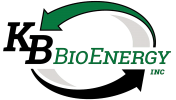What are biosolids?
Biosolids are the organic byproduct of wastewater treatment systems. They are created from the residuals left over after wastewater processing and treatment. Because they are rich in nutrients, they can be utilized as an organic source in fertilizer and other horticultural products.
Is there a difference between biosolids and sewage sludge?
Yes, there is a huge difference between biosolids and sewage sludge. Sewage sludge refers to the untreated solids that are left over after wastewater is treated in a wastewater treatment plant. Biosolids are the residuals that remain after sewage sludge has been treated andpathogenshave been treated.
Why recycle biosolids instead of just throwing them away?
Biosolids should be disposed of as a last resort. They are a great source of organic matter and can be utilized in fertilizer and other soil amendments in a beneficial manner. Since biosolids have beneficial reuse qualities we should treat them as resources instead of a waste product. Biosolids can improve soil quality health and reduce erosion. With essential nutrients that promote plant growth, biosolids have a great benefit to soil and crops as well.
Are there heavy metals in biosolids?
Heavy metals were a concern in the 1970s when land application of biosolids commenced, but significant controls have been put in place to decrease metal inputs to wastewater treatment plants. Since the 1970s, wastewater treatment plants have limited the metals in their incoming wastewater by issuing permits to industrial sources andrequiringmore stringent pretreating of wastewater to remove metals. Yes, there can be heavy metals found in biosolids, but they are at concentrations so low that they’re often undetectable or do not pose threats to human health and the environment.
Are all Biosolids the same?
No, all biosolids are NOT the same. Based on the level of treatment, biosolids are grouped into different categories. Untreated sludge is considered Raw. The most common form of treatment is partially treated biosolids, which is classified as Class B. This material is often associated with a liquid land application that occurs on farm fields. Class A classification results from high-levels of treatment with the lowest levels of metals/pathogens/etc. with unrestrictive use applications. The highest most thorough and extensive treatment is classified as Exceptional Quality or EQ. EQ production is very infrequent in the industry but holds the highest levels of treatment measures and standards. Class EQ material has minimal amounts of metals and also provides unrestrictiveuse applications.
How are biosolids regulated?
Biosolids are regulated by both the Federal EPA and state environmental agencies. Back in 1993, the EPA published 40 CFR (Title 40, Code of Federal Regulations) Part 503 Biosolids Rule governing the use and disposal of municipal sewage sludge according to Sections 405(d) and (e) of the Clean Water Act. The Part 503 requirements are based on the results of an extensive risk assessment of biosolids. The EPA’s other publication, A Guide to the Biosolids Risk Assessments for the EPA Part 503 Rule, outlines the steps that are taken to ensure that biosolids are derived safely.
The Part 503 rule also includes numerical limits for metals in biosolids, site restrictions, crop harvesting restrictions, pathogen reduction standards, and reporting requirements for biosolids used in land applications. It also specifies requirements for biosolids that disposed of or incinerated.
While the EPA oversees the nation’s biosolids management practices, the agency typically looks to state and local government to make decisions regarding use and disposal and for enforcement support.
Are odors a problem with biosolids?
Biosolids can have an odor. They originate in wastewater and sewage, so often a slight odor is unavoidable. With that being said, if biosolids are treated properly and responsibly managed during production, the odor does not usually present a problem. In fact, any odor typically dissipates quickly once biosolids are used in their reuse application.
Is it safe to eat food that has been grown using biosolids
Yes, it is safe to eat food that has been grown using biosolids. In 1993, the Water Science and Technology Board of the National Research Council/National Academy of Sciences (NAS) did a comprehensive review of biosolids management practices and public health issues. They determined that when prepared in accordance with federal regulations and guidelines, the use of biosolids in the production of crops for human consumption presents a negligible risk to the consumer.
How long have biosolids been in use?
For thousands of years, biosolids have been recycled. In China, for thousands of years, sewage was returned to farmland to improve soil quality and in Europe, biosolids have been applied on agricultural lands for over a century. Today in the United States, thousands of municipalities across all 50 states recycle their biosolids in a manner that adheres to Federal EPA regulations and guidelines.
Are pharmaceuticals found in biosolids?
Biosolids can contain trace amounts of pharmaceuticals or micro constituents. The more stringent of treatment (EQ versus a Class B) done to biosolids the less likely they are to contain any of this material.
Who should I contact with questions about biosolids?
If you have any questions about biosolids, reach out to the experts at KB BioEnergy. Our skilled team has decades of experience and would be happy to answer any questions you may have regarding biosolids. You can either submit a contact form or give us a call at (330) 864-2621.
For Further Information Please Reference the Following Resource:
https://www.wef.org/globalassets/assets-wef/3—resources/topics/a-n/biosolids/technical-resources/wef-fact-sheet-microconstituents-v25-aug-2017.pdf
